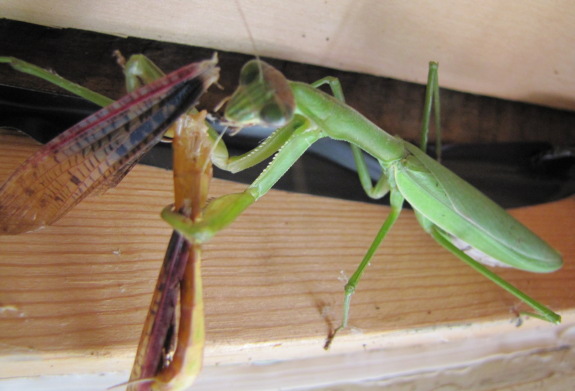
Praying for a snack

There were two hitchhikers on
our Meyer
lemon tree we brought in on Friday.
They seemed cute together on
Saturday and made me feel all warm inside.
Now there's just one. I'll
let her out tomorrow after she's had a chance to digest the weekend.
Want more in-depth information? Browse through our books.
Or explore more posts by date or by subject.
About us: Anna Hess and Mark Hamilton spent over a decade living self-sufficiently in the mountains of Virginia before moving north to start over from scratch in the foothills of Ohio. They've experimented with permaculture, no-till gardening, trailersteading, home-based microbusinesses and much more, writing about their adventures in both blogs and books.
Want to be notified when new comments are posted on this page? Click on the RSS button after you add a comment to subscribe to the comment feed, or simply check the box beside "email replies to me" while writing your comment.

Null, Did you know that a female praying mantis eats the male after copulation?
And that praying mantis' are the Bushman's god? Dani
Maggie --- Between the four leaf clovers and the mantises, this must have been the luckiest year ever. We've had so many mantises that we usually see more than one a day. This spring, the baby mantises were so thick on the ground it was hard to walk without crushing them!
Dani --- When I researched that a few months ago, I learned that female mantises actually don't usually eat the males in the wild. In the lab, they do, but males generally get away if they're not in an enclosed space. Hadn't heard that about mantises being the bushman's god, though.